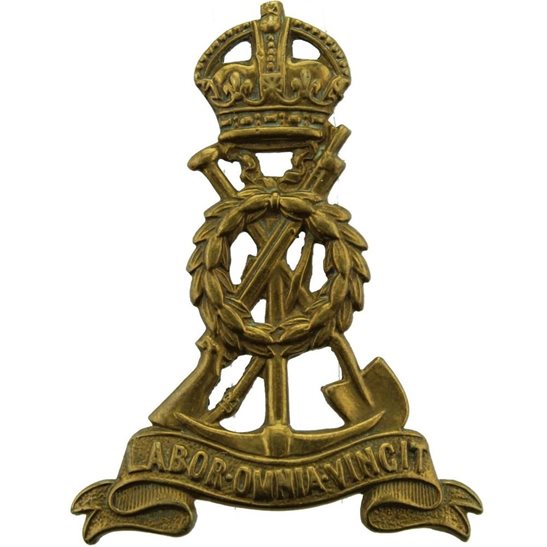Personal Details
Born: 1899 (second quarter) in Whitchurch, Shropshire.
Family: Fourth of nine children born to William and Ellen Eaton. In 1922 Robert married Hilda K Woollam in Wrexham, Denbighshire, Wales and together they had a daughter, also named Hilda K, that same year.
Residence: In 1901 the Eaton family were living at 9 Barkhill, Whitchurch, Shropshire. Ten years later they were residing at 2 Highgate, Whitchurch and this was the address given on the 1919 Absent Voters list. According to army pension records he moved from there to 81 Vernon Street, Wrexham, then to 73 Buston Road, Leeds, Yorkshire and by 1922 he was living at 1 Belle Vue Crescent, Leeds, Yorkshire.
Employment: Not known
Died: In April 1928, aged 29, in Yorkshire.
Military Details
Regiment: Labour Corps, formerly King’s Shropshire Light Infantry
Rank: Private
Service Number: 605449, formerly 21226
Date of Enlistment: 6 October 1915
Date of Discharge: 12 April 1919
Reason for Discharge: Sickness
Other Information: Percy was a corporal in the 71st Sanitary section of the Royal Army Medical Corps. A sanitary section of the Royal Army Medical Corps consisted of a lieutenant or second-lieutenant, 2 sergeants, 2 corporals, 20 privates and 1 batman. Its job was to maintain as far as possible clean water supplies, cooking facilities and billets, delousing stations and similar facilities.
Robert was awarded the Campaign Medals (British War Medal, and Victory Medal).

The British War Medal (also known as 'Squeak') was a silver or bronze medal awarded to officers and men of the British and Imperial Forces who either entered a theatre of war or entered service overseas between 5th August 1914 and 11th November 1918 inclusive. This was later extended to services in Russia, Siberia and some other areas in 1919 and 1920. Approximately 6.5 million British War Medals were issued. Approximately 6.4 million of these were the silver versions of this medal. Around 110,000 of a bronze version were issued mainly to Chinese, Maltese and Indian Labour Corps. The front (obv or obverse) of the medal depicts the head of George V. The recipient's service number, rank, name and unit was impressed on the rim.
The Allied Victory Medal (also known as 'Wilfred') was issued by each of the allies. It was decided that each of the allies should each issue their own bronze victory medal with a similar design, similar equivalent wording and identical ribbon. The British medal was designed by W. McMillan. The front depicts a winged classical figure representing victory. Approximately 5.7 million victory medals were issued. Interestingly, eligibility for this medal was more restrictive and not everyone who received the British War Medal ('Squeak') also received the Victory Medal ('Wilfred'). However, in general, all recipients of 'Wilfred' also received 'Squeak' and all recipients of The 1914 Star or The 1914/1915 Star (also known as 'Pip') also received both 'Squeak' and 'Wilfred'. The recipient's service number, rank, name and unit was impressed on the rim.

The Silver War Badge was issued in the United Kingdom and the British Empire to service personnel who had been honourably discharged due to wounds or sickness from military service in World War I. The badge, sometimes known as the "Discharge Badge", the "Wound Badge" or "Services Rendered Badge", was first issued in September 1916, along with an official certificate of entitlement.

